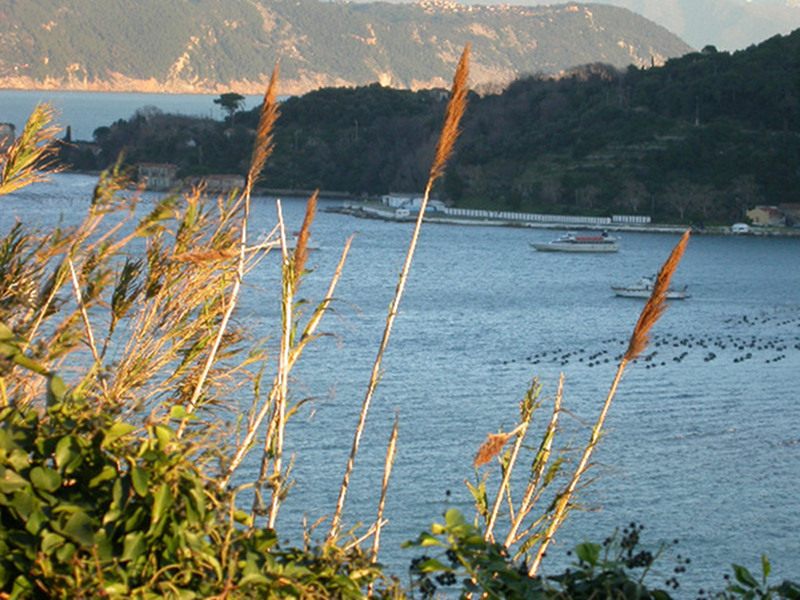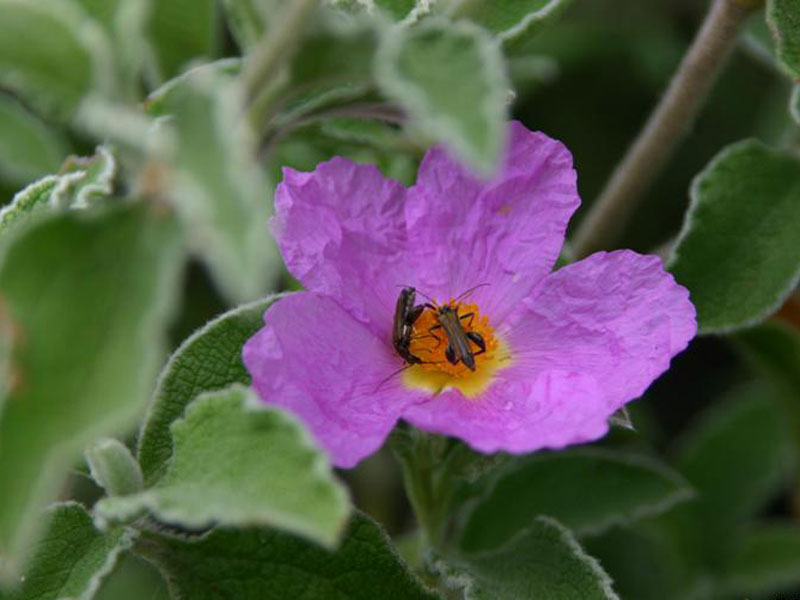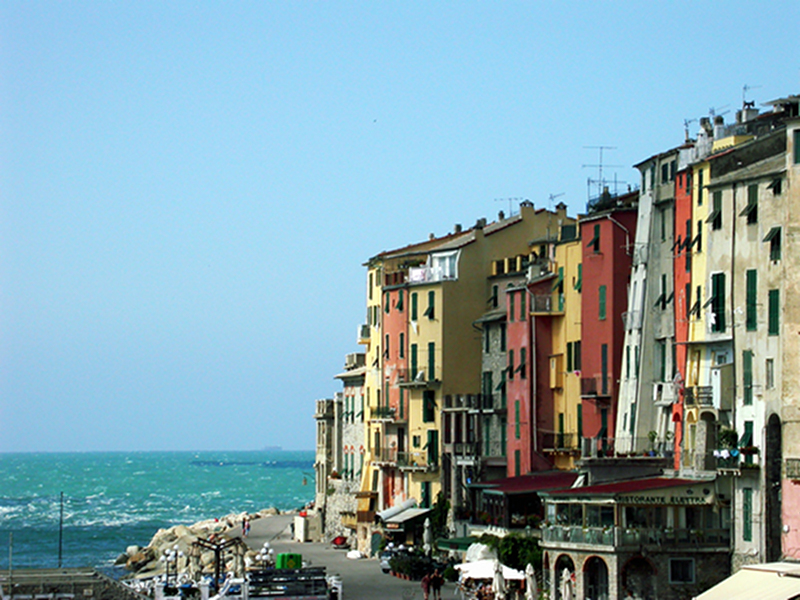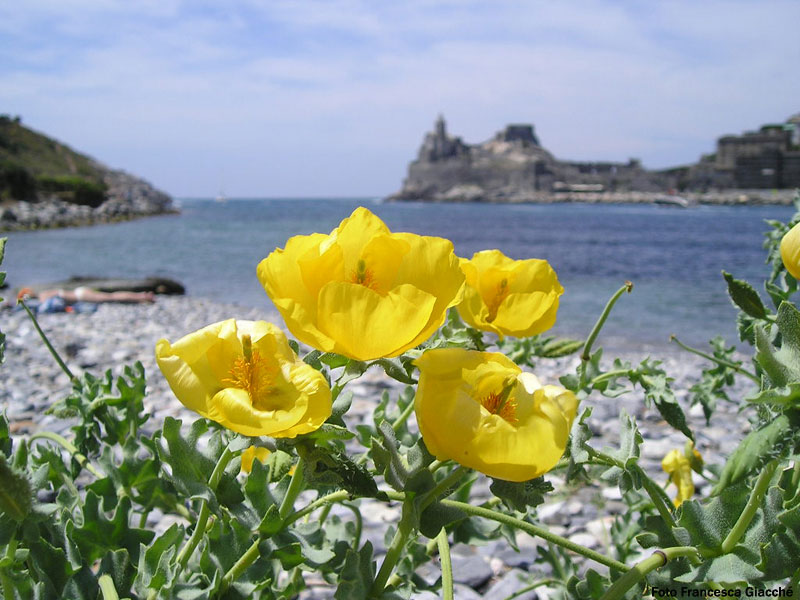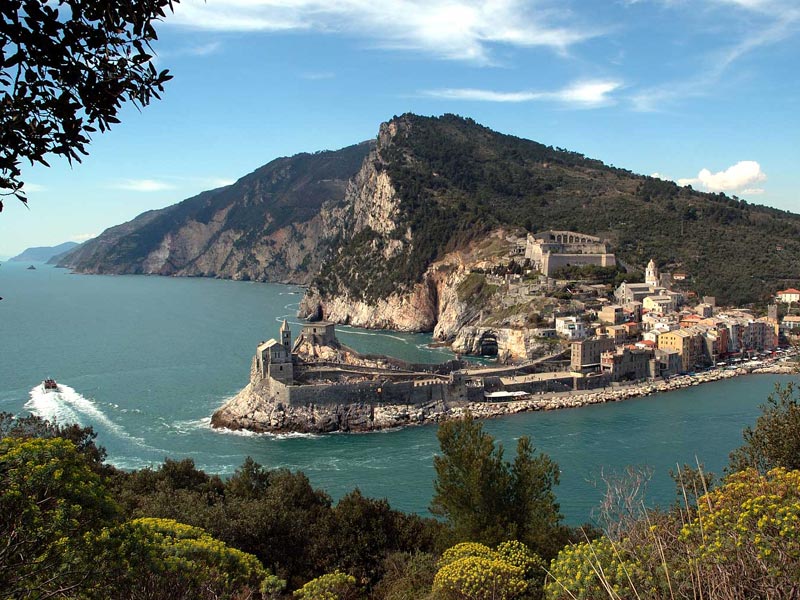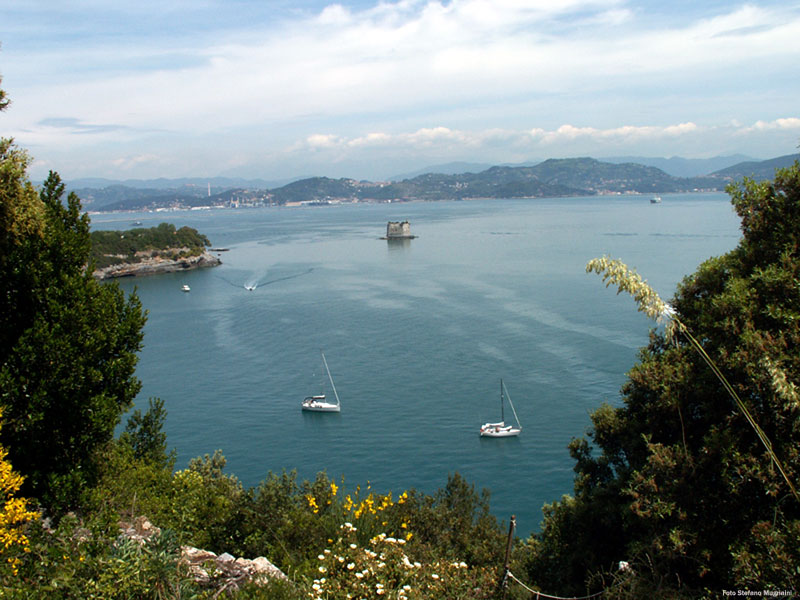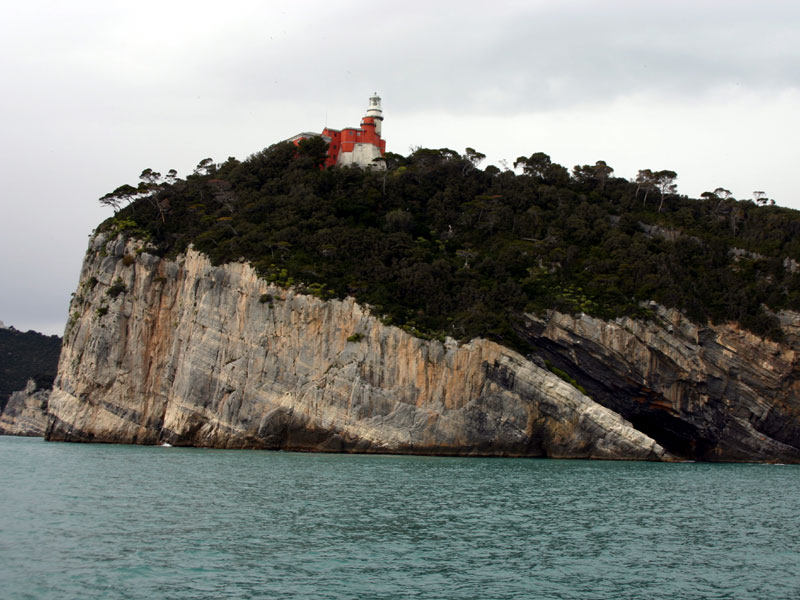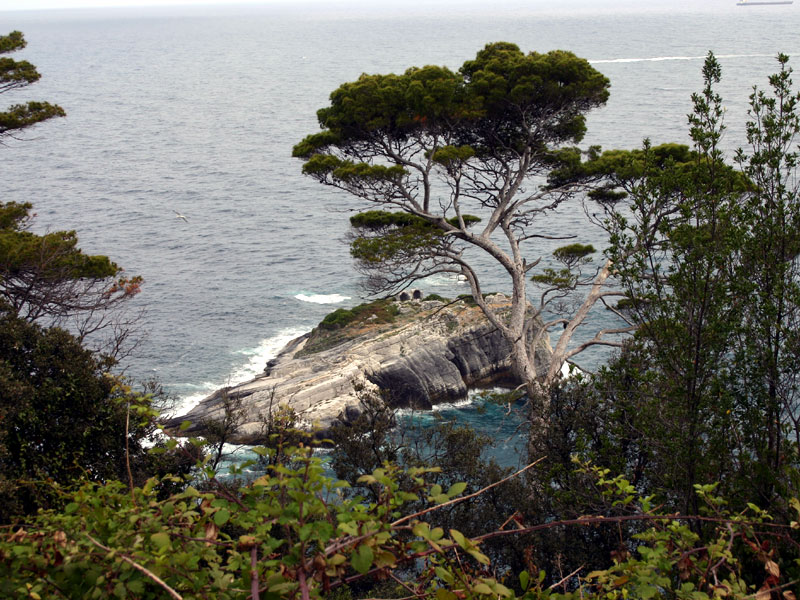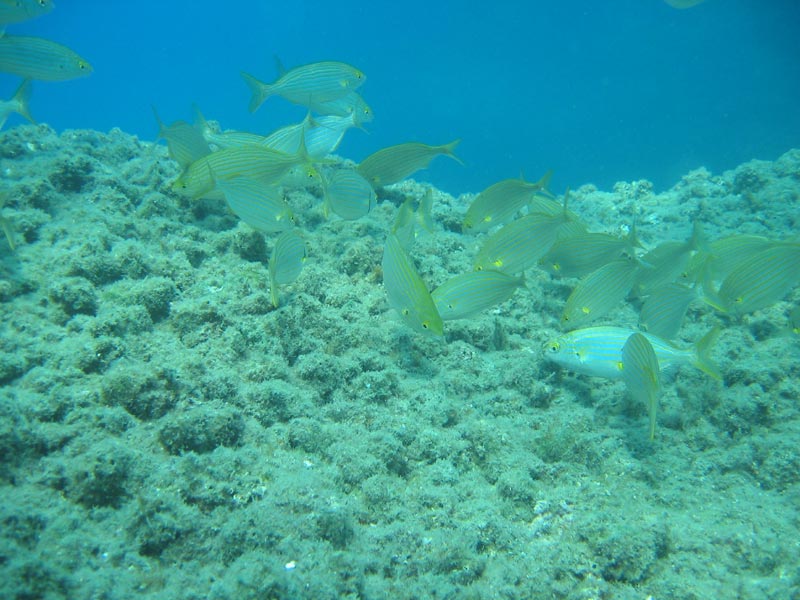Parco Naturale Regionale di Porto Venere
www.parconaturaleportovenere.itProtected Area
Identity Card
- Porto Venere Regional Nature Park:
- Land Surface Area: 275.00 ha
- Sea Surface Area: 131.00 ha
- Buffer zone: 38.00 ha
- Regions: Liguria
- Provinces: La Spezia
- Municipalities: Porto Venere
- Establishment Measures: LR 30/2001 03/09/2001
- PA Official List: EUAP1168
- Park Authority: Comune di Porto Venere
- Further managed Protected Areas:
- ZSC Fondali Isole Palmaria - Tino - Tinetto
- ZSC Isole Tino - Tinetto
Porto Venere Park, World Heritage Site
Porto Venere Regional Park (L.R. no. 30 of 03/09/2001), including a Marine Protected Area, covers the most important area of the eastern section of Liguria, developing on a total area of about 400 hectares. The Terrestrial Area includes Porto Venere historical town center, the islands Palmaria, Tino, and Tinetto, and the coastal stretch going from the town to Valle dell'Albana. The Marine Protected Area includes Porto Venere channel, characterized by a Posidonia seabed, all the south-western coast of the island, and the stretch of sea surrounding Tino and Tinetto islands. The whole area, declared in 1997 UNESCO World Heritage through the establishment of the site "Porto Venere Cinque Terre e Isole", belongs to 3 SCI areas (Sites of Community Importance according to the Directive CE 92/43 Habitat), demonstrating the importance of the biodiversity characterizing the Protected Area.
Flora
Porto Venere Regional Park lies in a territory
of rather recent formation: as a matter of fact, the islands Palmaria,
Tino, and Tinetto separated from the mainland only in the late
Quaternary. This has not enabled the floristic differentiation and
justifies the presence of the same flora on islands and inland areas
and of a few, although important, endemic species. Moreover, there are
various Mediterranean species reaching on these coasts their
north-eastern distribution limit.
(the following links lead to Italian texts)
The Park History
The protection of the most precious area of eastern Liguria, entirely
situated in the Municipality of Porto Venere, was decided in 1985 with
Regional Decree no. 12.
In 1995, Cinque Terre Regional Park was established, while Promontori e delle Isole di Levante Regional Park was established in December 1999.
With L.R. (Regional Decree) 30/2001 Regione Liguria has acknowledged
the peculiarity of the protected area. UNESCO has acknowledged it as
World Heritage through the establishment of Porto Venere Regional Park.
The Territory
Porto Venere is known above all for its landscape features: the
tower-houses leaning one against the other and forming a multicolored
group of buildings were built in the first half of the 12th century by
the Genoese to transform the ancient Roman "portus" in the fortified
outpost of their eastern border. These houses give the town a
uniqueness which has transformed it into a famous tourist destination.
The
particular outline of the village and the small S. Pietro church
clinging to the top of the rocky promontory overhanging the sea are set
in a natural frame of unquestionable beauty and have always delighted
poets, artists, and travellers. Anyway, not everyone is aware of the
scientific importance of this area, which was the theater of important
experiments and research activities.
As a matter of fact, Porto
Venere had already been chosen in the second half of the 18th century
by the naturalist Lazzaro Spallanzani as a base for his research
activities: he defined it in his diaries "unique in Europe" and "...
very adequate to satisfy the needs of eager researchers for the almost
continuous peace characterizing it". One century later, the geologist
and paleontologist Giovanni Capellini highlighted how Naturalists
coming from all over the world to celebrate the jubilee of the
zoological station in Naples, "expressly recognized that the first
zoological station was in Porto Venere" in the house - a monastery at
that time, then town hall, today a hotel - where Spallanzani used to
study marine animals and carry out experiments on them, without
neglecting important ornithological, botanical, and geological remarks.
The establishment of Porto Venere and its archipelago Regional Park (Regional Law no. 30 of 03/09/2001), including a
Marine Conservation Area, confirms after two centuries the naturalistic
value of the area, declared World Heritage Site by UNESCO.
The
terrestrial protected area includes not only the historical village
center, but also the western coastline up to Albana Valley (here the
territory of Tramonti begins, bordering with 5 Terre National Park), as
well as Palmaria, Tino, and Tinetto Islands. Despite its rather reduced
area, 398 ha (including islands and mainland) and 3 km for the Marine
Conservation Area, Porto Venere Regional Park is characterized by
naturalistic features involving various disciplines: geology,
speleology, paleontology, botany, ornithology, herpetology, and of
course, marine biology. Leaving from Albana Valley, we meet the
so-called "Reds", that is rocks whose characteristic color is given by
the presence of fossil ammonites; beyond them, it is possible to admire
the charming cliffs overhanging the sea, forming the famous Muzzerone
practice wall, busy with climbers coming from all over the world for
its various climbing opportunities (there are itineraries with various
levels of difficulty) and the uniqueness of the uncontaminated
landscape context. For these features, the stretch of coast between
Tramonti and the rocky promontory of Porto Venere where the ancient San
Pietro small church rises, house important bird species that are
included in the "Habitat" Directive lists of the European Community (CE
92/43), like the Common Raven (Corvus corax), the Peregrine (Falco peregrinus), the Blue Rock Thrush (Monticola solitarius), and the Alpine Swift (Apus Melba).
The Islands
The islands of the archipelago, whose substrata consist of limescale alternating with portoro, the rare black marble with characteristic yellow veining, represent the natural continuation of Porto Venere promontory: over 9,000 years ago, they formed a unit. Several sites in the Park territory bear evident traces of the portoro mining activity, and the Park is organizing a requalification and enhancement project to make them accessible to visitors. The islands are also characterized by karstic caves and cavities: in the most famous one, Grotta dei Colombi on Palmaria Islands, finds from the Paleolithic Age to the Metal Age have been discovered.
- Palmaria Island
The name of Palmaria Island probably derives from the presence of several caves, called 'barma' or 'balma' (cave). Palmaria Island, you can easily reach from Porto Venere or La Spezia with a regular ferry service, is the largest island (179 ha) and offers itineraries of great landscape and naturalistic value giving the opportunity to go round it in less than three hours. Its slopes present different orographic features: the eastern slope gradually reaches the sea and is rich in Mediterranean vegetation, while the western one is characterized by steep rocky cliffs alternating with caves and ravines (Grotta Azzurra, Grotta Vulcanica, Grotta dei Colombi), undisputed realm of one of the largest colony of Herring Gulls of the Ligurian Sea, which have gradually colonized also the rests of the portoro marble mining sites that have been abandoned since the 80s, thanks to the commitment of the Municipality of Porto Venere which has fought for the safeguard of a landscape that would have been definitively endangered and which has become today a strict reserve of the Park. Interesting the botanical species living on the island: besides the characteristic shrubs of the Mediterranean maquis (tree spurge, broom, Mauritanian grass), many of which find in this territory their northernmost distribution area, there are rare plants for Liguria like the Pink Rockrose (Cistus creticus L.s.l. ex-Cistus incanus), Juniperus phoenicea and endemic species like Centaurea veneris. At the summit of the island, near Batteria del Semaforo, an Environmental Education Center has been established: it welcomes groups of experts dealing with research activities and, during the summer, students and activities organized by WWF. Among the Projects housed by CEA in Palmaria, the "Progetto Piccole Isole" has been carried out for almost twenty years: it is a project dealing with the study and monitoring activity of the migratory animals, organized by the National Wildlife Institute.
- Tino Island
Tino Island with the red-white spot of the recently renovated lighthouse standing out from the green of the thick holm oak wood (Quercus ilex) characterized by the presence of Aleppo Pine (Pinus halepensis), has always been surrounded by mystery, probably also deriving from its historical inaccessibility - it is a military area. Since last year, thanks to an agreement between the Park and the Navy, it is possible to carry out a guided tour every month. Over the centuries, the woodland has replaced the cultivations brought in the island by the Benedictine monks since the 11th century: traces of them only remain in the terraced strips of land with dry-stone walls sloping down towards the north. On the contrary, the south-western coast is characterized by calcareous cliffs whose summit is frequently dominated by Rosemary (Rosmarinus Officinalis), the one and only station in eastern Liguria. In the area of the landing stage and around the cliffs, the above-mentioned Centaurea Veneris and the Samphire (Crithmum Maritimum) flower. Moreover, Tino Island is also characterized by rare animal species like Euleptes europea, the smallest existing gecko, a highly vulnerable species mainly living in the islands and for this reason protected at a European level (Annexes II and IV "Habitat" Directive CE 92/43 - Annex 3 Berne Convention - IUCN Vulnerable Species 1996), as well as at a regional level. Important presences, of which the real nesting site is still to verify, are the Sparrow Hawk (Accipiter nisus) and, among the sea birds, the Shag (Phalacrocorax aristotelis). The legend surrounding the historical character of St. Venerio, the hermit who lived on the island between the 16th and 17th century, protector of La Spezia Gulf and of the Italian lighthouse-keepers, has contributed to maintain the mystery surrounding the island. The small stone church rising next to the rests of the 11th century Benedictine monastery rising on his burial place, is dedicated to him. Tino Islands is accessible not only during the tours organized by the Park, but also every year on the occasion of St. Venerio Feast (13th September).
- Tinetto Island
Another evidence of the presence of the monks on the islands is represented by the rests at the summit of Tinetto islet, stone ruins dating back to the 6th-7th century, today shelter of another endemic species, Pordacis muralis tinettoi a lizard different from the other species living on Tino and Palmaria islands and on the mainland. It lives here with the above-mentioned Euleptes europea. Set in a seabed of great naturalistic and ecological beauty, Fossa del Tinetto is one of the privileged diving sites for the vertical well situated in its final part and communicating with the surface, creating surprising light games.
The Marine Conservation Area
The area, safeguarded for its particular habitats and richness in
biological features, extends for 3 sq.km from Porto Venere channel,
where there is a Posidonia bed and across the so-called "Bocche", the
most narrow point of the channel between the village and Palmaria
Island, along the whole south-western coast of the island, including
the stretch of sea surrounding Tino and Tinetto Islands.
In this
stretch of sea it is possible to find the main ecosystems of the
Mediterranean Sea forming on the various kinds of seabed: sandy or
rocky seabed and Posidonia bed. Therefore, the seabed is rich in animal
and vegetal species linked to the different morphological aspects
characterizing it: rocky, muddy, or sandy substrata. Deeper and deeper,
we will find marine caves, pre-coralligenous and coralligenous areas
rich in gorgonians (Eunicella singularis, Eunicella verrucosa, Leptogorgia samentosa)
and madrepores. There are many protected species among seaweed,
sponges, mollusks, crustaceans, and fish. The small Posidonia bed (Posidonia Oceanica)
of the Channel offers food and shelter to a great quantity of marine
organisms and fish which often live in it their whole life, like the
Wrasse (Labrus viridis), the Great Pipefish (Syngnathus acus), the Sea Horse (Hippocampus ramulosus), and the Annular Seabream (Diplodus annularis).
Therefore, it is a stretch of sea of great naturalistic interest for
the rich biodiversity of the seabed, visited every year by divers
coming from all over Italy, and also for this reason highly vulnerable.
The Park is going to regulate the various activities carried out in
this area.



